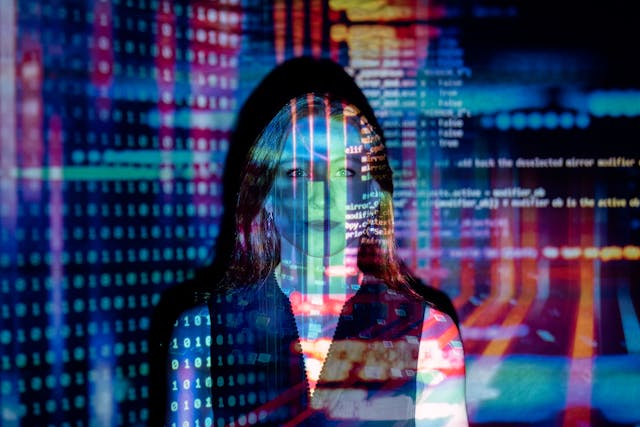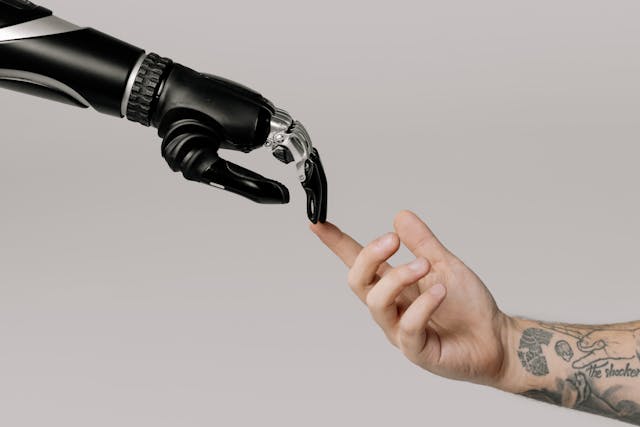In today’s world, algorithms quietly decide who makes it to the next round of interviews, chatbots handle initial candidate screenings, and AI tools assist in writing everything from marketing copy to annual performance reviews. Yet, amidst all this automation, one thing remains irreplaceable—human ingenuity.
As companies like Microsoft, Meta, and Google double down on artificial intelligence, the real competitive edge isn’t only in knowing how to code or operate an AI tool. The spotlight is shifting toward something deeper—a mindset that blends creativity, adaptability, and visionary thinking.
This is the innovative mindset: a modern evolution of the creativity that once fueled Silicon Valley’s rise, now redefined for an era where humans and machines co-create. It’s not just about “thinking outside the box” anymore—it’s about redesigning the box entirely, knowing when to partner with AI, and when to trust human instincts.
From Jobs to GPT: A Shift in the Innovation DNA
When Steve Jobs famously described computers as “bicycles for the mind,” he saw technology as a way to amplify—not replace—human creativity. His philosophy placed human needs at the center of tech innovation. Products weren’t just functional; they were intuitive, emotionally resonant, and almost artful in design.
Jobs’ Philosophy
Human-Centered: Technology as a tool to empower people, not control them.
Design-First: Aesthetics and usability were as important as raw capability.
Emotionally Intelligent: Products connected with users on a personal level.
Fast forward to today, and AI has radically expanded what’s possible. Tools like GPT, Midjourney, and Copilot can draft, design, and predict at speeds no human can match. But the core principle Jobs stood for—technology as an amplifier of human potential—remains the guiding star.
AI Era Philosophy
Co-Creation: Humans and AI collaborate in a continuous feedback loop.
Predictive Personalization: Products anticipate needs before you express them.
Ethically Grounded: Innovation balanced with privacy, fairness, and trust.
Jobs never saw generative AI in action, but his mindset survives in every creative partnership between human imagination and machine intelligence. The tools are faster, the data is richer, and the scale is global—but the soul of innovation remains human.
Corporate Evolution: Microsoft, Meta, Google
The leading tech companies are no longer treating AI as just another tool in the tech stack—they are reengineering their organizational DNA to embed AI at every level.
Microsoft
AI-First Reset: Layoffs aren’t random—they reflect a shift toward AI-powered productivity.
Performance Metrics: Employee reviews now assess how effectively individuals use AI tools like Copilot.
Agility Over Tenure: Internal hiring favors adaptability over years of service.
Microsoft isn’t just rolling out AI—it’s training its workforce to think and work in partnership with it.
Meta
DEI Reframed: Diversity programs are evolving into “innovation-centered diversity,” focusing on varied cognitive approaches, not just demographic categories.
AI-Driven Structure: Teams are increasingly organized around large language model (LLM) development, particularly its in-house LLaMA models.
Cognitive Diversity Priority: Encouraging different problem-solving methods as a driver of innovation.
Meta’s strategy blends creativity with algorithmic power, treating diversity of thought as a core innovation asset.
Flattened Hierarchies: Management layers reduced to accelerate AI-related decision-making.
Culture Update: “Googleyness” now includes efficiency, bold experimentation, and resilience.
Empowered Individuals: Focus shifts from protecting hierarchy to enabling solo innovators to make an impact.
Google’s approach signals that innovation can’t wait for bureaucratic approvals—it thrives when ideas can move fast.
Across all three giants, one theme stands out: they reward those who combine digital fluency with bold, interdisciplinary thinking. This is the essence of the innovAtIve mindset.

Job Applications Reimagined
The way people get hired is transforming at the same pace as the workplace itself. Longevity in a role no longer guarantees advancement—evolution does.
AI in Hiring
Recruiters increasingly rely on AI to screen resumes, analyze writing samples, and even assess facial expressions and voice tone in video interviews. These algorithms aren’t just checking for keywords—they’re evaluating soft skills, adaptability, and problem-solving potential.
Creative Self-Positioning
Job seekers are using AI themselves to gain an edge—designing visually striking resumes, refining LinkedIn profiles, and even prompt-engineering their application materials to align with specific roles.
Adaptability Over Experience
A decade at one company may matter less than the ability to learn new tools, pivot fast, and contribute fresh ideas. In an AI-shaped hiring landscape, your track record of innovation carries more weight than your job titles.
The best candidates don’t just say, “I can do the job.” They tell a story that shows curiosity, experimentation, and the courage to break from routine.
How to Cultivate Your innovAtIve Mindset
You don’t need to work at a tech giant—or even be a technologist—to develop this mindset. Whether you’re an artist, strategist, educator, or engineer, the innovAtIve mindset is about how you think, not just what you know.
Here’s how to strengthen it:
Think Across Disciplines
Blend AI with philosophy, ethics, and design thinking. Great ideas often come from combining fields that rarely meet.
Prototype Relentlessly
Don’t wait for formal approval. Build rough versions of your ideas, share them, and iterate based on feedback.
Speak Future Fluently
Learn how AI works—not just the tools, but the principles and trends shaping its evolution.
Challenge What Exists
Go beyond asking “how can we do this better?” and ask “why hasn’t this been done differently?”
Stay Ethically Grounded
Innovation without ethics can erode trust. The next generation of leaders will be those who pair creativity with responsibility.
An innovAtIve mindset thrives at the intersection of curiosity, skill, and courage.
The innovAtIve mindset is not a trendy buzzword—it’s the most valuable professional currency of our time. It built the iPhone, powers Microsoft’s Copilot, drives Meta’s AI breakthroughs, and shapes the search algorithms you use every day.
In 2025, the innovators who stand out will be those who:
Collaborate fearlessly with AI.
Cross boundaries between disciplines.
Turn ideas into action without waiting for permission.
Anchor their creativity in ethics and empathy.
Innovation is no longer confined to R&D departments or Silicon Valley garages. It’s a personal philosophy—a way of looking at problems, opportunities, and the future itself.
And in an age where AI can do almost anything, the ability to imagine, adapt, and inspire is not just relevant—it’s irreplaceable.



